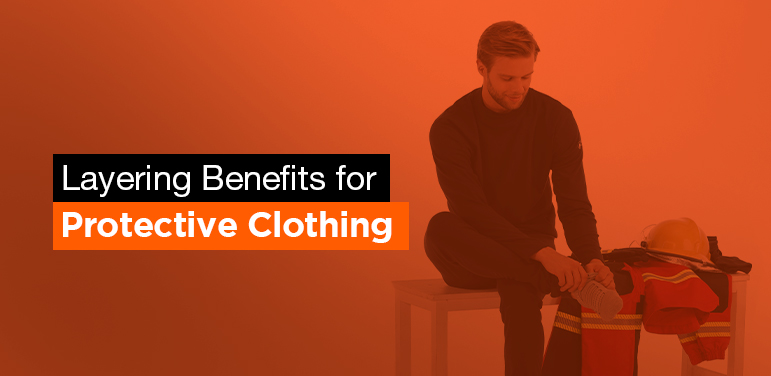Does it make good sense to use multiple layers of FR garments to protect against exposure to industrial heat and flame hazards, similar to the layering approach used in outdoor cold, rain & wind protective clothing? We will try to find out an answer to the above question in this blog.
While it is a widely accepted fact that dressing in layers is a very effective way of keeping warm in cold conditions, but it’s less common knowledge that layering has the same insulating effects in keeping heat away from the body during thermal hazard exposure. For enhanced thermal protection, the layered approach can be utilized for any hazardous environment – be it hot or cold – across multiple industries.
Air acts as an insulator and tiny amounts of it are generally always present between layers of clothing. This additional insulation creates a compounding effect when it comes to heat and flame protection. Due to this effect when lighter-weight or lower-rated garments are layered together – with small air pockets between them – they can often provide thermal protection at par with a single layer of heavier protective garment.
Flame-resistant jackets, aluminized coats, insulated coveralls, bibs, etc., are commonly used as a primary layer of a PPE ensemble. A well-chosen, comfortable, and highly protective base layer creates a strong foundation for adding additional layers, enhancing overall safety against extreme thermal exposure. However, under extreme conditions involving flame, molten metal, arc flash or other thermal hazards, primary protection layers might eventually fail due to the intense and continuous exposure. In such hazardous situations, a highly protective base layer can provide crucial extra seconds for escape, reducing the risk of serious injuries.
With modern layered clothing solutions, there is no need to sacrifice comfort for protection (or vice-versa). Today’s PPE layers are lightweight and comfortable, allowing for good maneuverability, fit, and style suited to variety of job functions and activity levels. Enhanced wearer comfort leads to better compliance, which results in safer workers, fewer burn injuries, reduced workers’ compensation claims, and greater cost savings.
Conclusion
Layering FR PPE saves money and, most importantly, can save lives. When you layer up garments you can increase the level of protection. For example, a polo shirt at 7.0 cal/cm2 and a Sweatshirt at 14.4 cal/cm2, when worn together, achieve a rating of 31.0 cal/cm2.


Leave a Reply